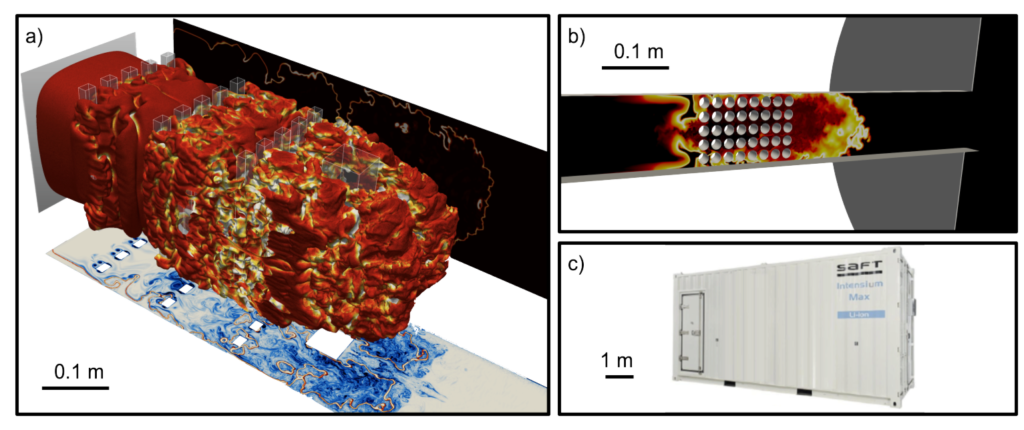Simulation of explosions in an industrial context: the challenge of large scales (TotalEnergies / CERFACS)
Training | Computational Fluid Dynamics | Combustion, Computational Fluid Dynamics
Required Education : Master or Engineering School
Start date : 1 February 2024
Mission duration : 6 months
Deadline for applications : 1 January 2024
Salary : 650€/month
Context
Asserting explosion risks is key for the industry. Using high-fidelity reactive large eddy simulation tools allow to capture the physics of the explosion, helping to build countermeasures. However, applying it to large deflagrations, exceeding the cube-meter, remains challenging, due to the disparity in scales: from the smallest – the flame – to the largest – the system -.
Objective
The internship aims at evaluating the capability of the large eddy simulation code AVBP [1], developed at CERFACS for new configurations, mimicking industrial-size accidents in terms of scale, obstacles and explosive mixtures. The intern will thus benefit from working at CERFACS in the CFD team (approx. 80 people including 45 PhD students), in relation with the HSE team at TotalEnergies. First of all, test configurations corresponding to experimental explosion scenarios will be targeted. Pressure sensors and flame velocity measurements will help to compare with simulations. Several scenarios are to be targeted, reproducing the consequences of a leak leading to an explosive mixture, with propane or hydrogen, and varying obstacles [2]. This will offer a complete education on the use of AVBP in the context of explosions. Then, a discussion on the applicability of AVBP to more exotic scenarios involving large scale, is to be proposed. An example is the large-scale energy storage system using Lithium-ion (BESS). For this kind of system, that can trigger uncontrolled runaway producing explosive conditions, development and validations are still to be proposed, a participation to these steps is planned [3, 4].

Work Program
- Assimilation of explosion physics
- Training on AVBP and its use in the explosion context
- Simulation of large-scale explosion scenarios and validation versus experimental, comparison to other simulation methodologies (FLACS, …)
- Proposition of strategies to compute other scenarios (BESS Li-ion)
This internship is intended to be continued with a PhD thesis, starting in autumn 2024, in partnership with TotalEnergies.
Contacts
poinsot@cerfacs.fr , dounia@cerfacs.fr , duchaine@cerfacs.fr

